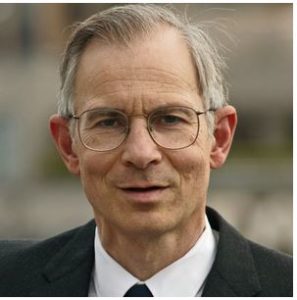
New Delhi, Aug 22 (IANS) Quantum physics long remains an enigmatic and fascinating branch of science, with lots of scientists, from Albert Einstein to Richard Feynman all doing their calculations and winning accolades.
But quantum physics is a loop, it continues to baffle even the most experienced but today another scientist has tried to demystify it in a recently published article.
Professor Carl Kocher through his own life story tries to make head and tail of this subject, defying the way questions or subjects like these are handled.
The article titled ‘Quantum Entanglement of Optical Photons: The First Experiment, 1964-67’ published in the journal Frontiers in Quantum Science and Technology delves into uncharted scientific territory.
This article stands apart from traditional scientific writing by offering a first-person narrative that details not only the strategic challenges faced during the experiment but also an interpretation of the results and their broader significance.
The experiment aimed to explore the phenomenon of quantum entanglement, specifically through the behaviour of optical photons, a subject that has intrigued physicists since the mid-20th century. The author through his life story tries to make things simpler for the layman reader, the topic being the EPR paradox.
The gyroscope and quantum theory both elucidate paradoxical behaviour, but the EPR paradox, introduced by Einstein, Podolsky, and Rosen in 1935, remains a central mystery in quantum physics. The gyroscope defied gravity, while quantum theory explained atoms and molecules. The EPR paradox remains a central mystery in quantum physics.
A gyroscope purchased at the age of eight by the author became a source of fascination due to its ability to defy gravity by spinning on a horizontal plane, a behaviour that, while seemingly paradoxical, is logically explained by Newtonian mechanics.
Similarly, quantum theory, developed in the 1920s, has been successful in explaining atomic and molecular interactions. However, the EPR paradox, introduced in 1935 by Einstein, Podolsky, and Rosen, highlighted a puzzling aspect of quantum theory: the entanglement of particles. This phenomenon, where measurements on one particle appear to influence another’s state, even across vast distances, remains a central mystery in quantum physics.
In 1964, an experiment was designed to observe quantum entanglement using visible-light photons emitted by excited calcium atoms. The experiment confirmed quantum theory’s predictions with striking precision, demonstrating the reality of quantum entanglement and challenging classical intuition.
While Newtonian mechanics fully explains a gyroscope’s behaviour, quantum entanglement continues to challenge classical understanding. The experiment serves as a bridge, expanding the understanding of quantum phenomena and highlighting the “strangely wonderful” nature of the quantum world.
Despite its challenges to classical causality, it remains baffling to date which is what the author finds wonderful, he is not saying he has demystified it but the attempt to do so remains admirable.